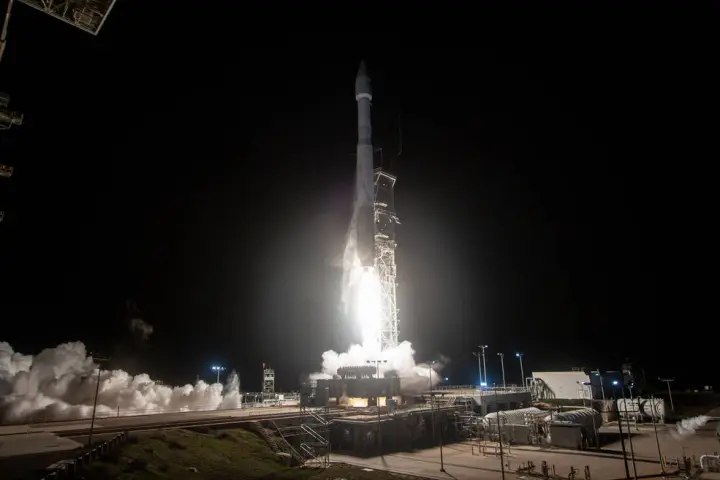This week NASA launched a new weather satellite, JPSS-2, into polar orbit around the Earth. But this launch was a special one, as it also included a test of a new inflatable heat shield called LOFTID.
The launch, using a United Launch Alliance Atlas V rocket, took place from Vandenberg Space Force Base in California early in the morning of this Thursday, November 10.

The Low-Earth Orbit Flight Test of an Inflatable Decelerator (LOFTID) is a heat shield designed to autonomously inflate as a payload enters an atmosphere, keeping the heat from the friction with the atmosphere away from delicate components inside. It could be used for landing heavier payloads like rovers on other planets, or for landing heavier components on Earth as well.
LOFTID was tested by releasing it after the satellite had been deployed, high above Earth, where it inflated itself and re-entered the atmosphere. Within a few minutes, it splashed down into the Pacific Ocean, from where the heat shield and data module were recovered. Each of these components holds a set of data on how the heat shield performed during the test which can now be analyzed to see how effective it was.
The Joint Polar Satellite System or JPSS-2 satellite had a small problem during deployment when one of its four solar arrays did not deploy correctly. But teams were able to fix the issue and fully deploy the array, with the satellite now operating as expected. JPSS-2 will be a part of a weather monitoring and prediction network run by NASA and the National Oceanic and Atmospheric Administration (NOAA).
“NOAA is an important partner for NASA in providing essential data about climate change, weather prediction, and environmental modeling for the benefit of citizens both in the U.S. and around the world,” said NASA Associate Administrator Bob Cabana in a statement. “Our Launch Services Program has successfully launched its 100th primary mission, and on this same flight enabled us to test a new technology for atmospheric re-entry with the LOFTID demonstration.”
Editors' Recommendations
- NASA gives Starliner’s first crewed launch the go-ahead
- Watch NASA begin testing its Orion capsule for lunar flyby
- NASA astronauts will try to grow plants on the moon
- NASA and Boeing start fueling Starliner spacecraft for first crewed flight
- NASA’s Crew-7 astronauts splash down safely off the coast of Florida




